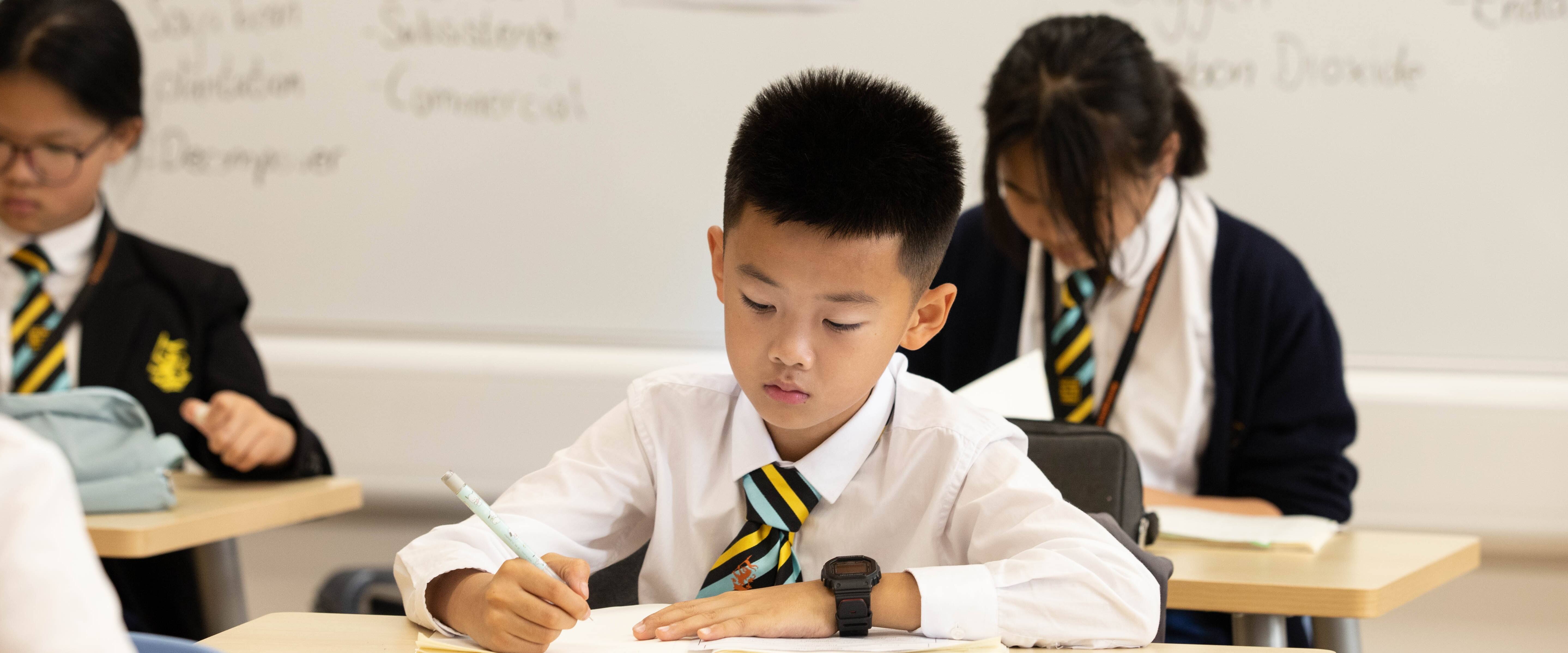
A popular topic in early childhood education, project-based learning has left educators, including parents, bewildered sometimes. Compared with linear textbook learning, project-based learning creates a context for children to apply their knowledge to practical use and fully grasp what is learnt. So how do we support pupils, especially Lower Primary pupils, to scaffold their learning and inspire them to dive into deep learning at our school? Let us explore our 1C celebration of learning to find out more.
Celebrations of learning are a routine weekly assembly for Lower Primary pupils at Hiba. It is an integral link to our teaching, where pupils in each class work together to present, summarise, and reflect upon their study and learning outcomes. Through their event, 1C pupils demonstrated what they achieved in the dinosaur project.
The learning started with what pupils were most interested in, the physical appearance of a dinosaur. To learn more, they established dinosaur files with information on lengths, heights, weights and habits of dinosaurs of various types, like brachiosaurus, triceratops, pteranodon and tyrannosaurus. However, the project’s highlight was when they have posed an open-ended question, “How do we build a 23-metre-long dinosaur model?” So how did they embrace this challenge?
Learning how to measure was step one – how to transfer their knowledge on measuring daily objects to measuring a 23-metre-long line with their classmates? In practice, 1C pupils learnt the concept of length, shape, and measuring with the aid of real-life objects. While building the dinosaur model, they walked to the outdoor classroom and managed to find various outdoor resources, such as tyres, plastic boxes, wooden ladders and the sandpit. The abundant and appealing outdoor spaces provided excellent opportunities for our pupils to think creatively. They worked in groups, put forward an original solution to the challenge and built an impressive dinosaur model as a result.
In this project, our pupils built on their interest in dinosaurs and integrated maths knowledge into their project through hands-on skills. Conversations, data records and documentation, enriched their vocabulary and improved their language fluency. In the end, they completed the construction through unwavering teamwork after rounds of exploration and reflection. It presented a chance of autonomous learning for our young pupils and helped scaffold their acquisition of knowledge and skills. What our pupils learn throughout the project-based learning, be it problem-solving, communication, theory application, environmental exploration or searching for solutions, lead them to realise more profound knowledge. In this way, project-based learning empowers pupils with autonomy and confidence, which emerges the ability to conduct learning at a deeper level.